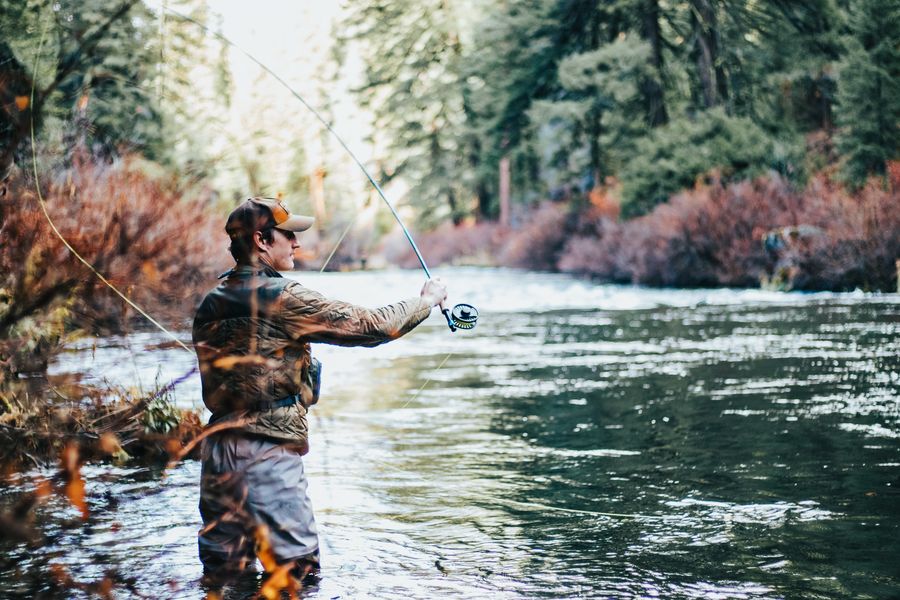Seasonal Fishing Wardrobe: What to Wear in Different Weather
Fishing is not just a pastime; it’s an adventure that depends greatly on being prepared for the elements.
A seasoned angler knows that the right attire can make the difference between a good catch and a great one. The weather can change rapidly, especially when you are by the water, making it essential to dress appropriately for comfort, protection, and performance.
Dressing for the Cold: Winter and Fall Fishing Gear
Fishing in colder climates demands a wardrobe that can stand up to the elements. The crisp air and chilly waters are no match for an angler well-equipped with the right layers.
From the quiet of a frosty morning to the chill of a windy dusk, having the appropriate gear ensures comfort and endurance.
The Base Layer: Foundation of Warmth
The base layer is crucial as it sits closest to your skin. It must manage moisture and maintain core warmth. High-quality materials like merino wool are excellent for cold weather fishing since they provide warmth even when wet and have natural odor-resistant properties.
Synthetic fibers, such as polyester blends, are also effective, offering quick-drying capabilities and moisture management. The fit should be snug but not restrictive, providing a comfortable base that supports a full range of motion for casting and reeling in the big catch.
The Insulating Layer: Retaining Body Heat
Above the base layer, the insulating layer plays a pivotal role in retaining body heat. This layer typically involves fleece, down, or synthetic loft materials that trap warm air close to your body. A vest or a jacket in this layer can provide additional warmth without impeding movement.
For the coldest environments, an insulated parka becomes necessary. According to OutdoorCrunch’s temp ratings, Arc’teryx Alpha Parka is the warmest of all options available, offering superior insulation technology that maintains warmth efficiently, so anglers can withstand frigid temperatures longer.
The Outer Layer: Shield Against the Elements
The final layer of defense, the outer layer, should protect against wind and water without trapping moisture inside. Durable, breathable materials like GORE-TEX provide a waterproof exterior that repels rain and blocks wind, while still allowing perspiration to escape.
Look for jackets and pants with adjustable features such as hoods, cuffs, and waistbands to seal out the elements. Ventilation is also important; features like pit zips or thigh vents allow you to release excess heat during active periods of fishing.
Warm Weather Fishing: Spring and Summer Apparel
As the ice thaws and the sun climbs higher, the fishing wardrobe shifts from insulation to ventilation.
The warm weather brings its challenges, including the fierce sun and the temptation of cool water that can suddenly become a hazard if a quick storm rolls in.
Lightweight and Breathable Fabrics
During these warmer months, clothing should be light and airy. Fabrics that offer moisture-wicking properties and quick-drying capabilities are essential.
Options include lightweight nylon, polyester, or specialized fabrics like bamboo blends which offer a soft feel with natural moisture management.
These materials keep you cool and provide comfort as temperatures rise. Choose light colors that reflect sunlight to keep cool in direct sunlight.
Sun Protection and Ventilation
Protection from the sun’s harmful rays is crucial. Long-sleeve fishing shirts and pants with a UPF rating of 50 or higher will shield skin from UV radiation.
Ventilated clothing that features mesh panels or venting systems helps to regulate body temperature and allows for airflow, which is especially beneficial in humid conditions.
Apparel with roll-up sleeves, zip-off legs, and adjustable collars adapt to the varying intensities of the sun throughout the day.
The Importance of a Good Hat and Sunglasses
A broad-brimmed hat offers dual functionality—it shields the face, neck, and ears from the sun while providing visibility in bright conditions.
Polarized sunglasses are another non-negotiable accessory for warm-weather fishing. They cut through the glare on the water’s surface, protect eyes from UV rays, and enhance visibility to improve fishing success.
Transitional Weather Gear: Adapting to Spring and Autumn Variability
The unpredictable nature of spring and autumn weather requires a versatile approach to your fishing wardrobe.
Being prepared for sudden temperature changes or unexpected rainfall can make or break a fishing trip during these seasons.
Versatile Layers for Changing Conditions
In transitional seasons, versatility is the name of the game. Convertible pants that transform into shorts, lightweight pullovers, and vests offer adaptability.
These pieces can be easily added or removed as temperatures fluctuate. Look for modular clothing systems that allow you to zip in additional insulation if the weather turns colder than expected.
Waterproofing and Wind Resistance
A lightweight waterproof jacket is a staple for spring and autumn fishing. It should be compact enough to stow away when not in use but robust enough to provide protection in a downpour.
Wind-resistant clothing is equally important; a gusty breeze can quickly lower body temperature, especially when moisture is involved. Choose apparel with a wind-blocking membrane that remains breathable.
Choosing Footwear for Transitional Seasons
Your choice of footwear should be based on the typical terrain and weather conditions you expect to encounter.
Waterproof boots or wading shoes with non-slip soles are vital for keeping feet dry and maintaining stability on slippery surfaces. Consider materials and construction that offer quick-drying capabilities, insulation for cooler mornings, and breathability for warmer afternoons.
Accessorizing Your Fishing Wardrobe for Comfort and Convenience
Fishing is an activity where the right accessories are not just for convenience; they serve as critical tools for safety and success on the water.
Gloves and Socks: Protecting Extremities
When it comes to cold-weather fishing, gloves and socks are your best defense against the numbness that can impair dexterity. Neoprene gloves maintain warmth and offer grip even in wet conditions.
In contrast, for warmer seasons, lighter gloves with UV protection can prevent sunburn and provide better rod handling. Socks should be chosen based on the season: heavy wool or thermal socks for the cold, and lighter, breathable ones for the summer.
Utility Vests and Weatherproof Bags
A well-designed utility vest can be a fisherman’s best friend, providing easy access to tackle, tools, and personal items without adding bulk.
Weatherproof bags protect electronics and clothing from unexpected splashes and rain, ensuring that everything you need remains dry and functional.
The Importance of Quality Eyewear
Quality eyewear is an investment in both comfort and safety. Polarized lenses are not only for clear vision below the water’s surface; they protect against long-term eye damage and reduce eye fatigue, making them an essential item for any angler’s wardrobe, regardless of the season.
Final Remarks
Building a seasonal fishing wardrobe is about understanding and anticipating the whims of nature.
From the coldest winter mornings wrapped in the warmth of an Arc’teryx Alpha Parka to the height of summer’s swelter shielded by UPF-rated fabrics, the right gear enables anglers to pursue their passion in any weather.
With each layer, piece by piece, anglers can prepare for the elements, ensuring that their focus remains on the thrill of the catch rather than the discomfort of being unprepared.

